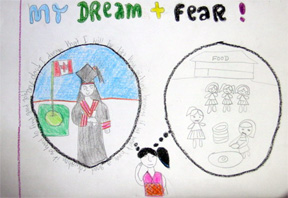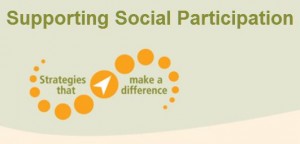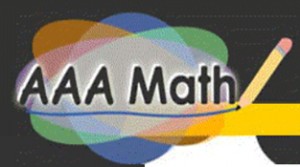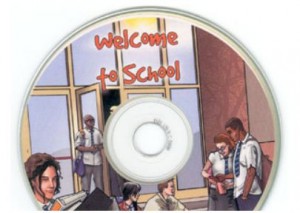
This page holds a collection of resources that supports the practical implementation of the programming ideas presented in this section. The resources include links to web-based documents that explain instructional design in more detail, and links to teacher and student resources. There are also downloadable PDF documents which provide more detail about the foundational ideas of this section. The literature review is a summary of the “best practice” research that was conducted in preparation for the creation of this website.
The Essential Components of English Language Development
Recommended text Resources for Content development
In the Netherlands, the Pharos National Knowledge and Advisory Centre on Migrants, Refugees and Health Care Issues has developed a programme for asylum seeking / refugee children aged 10 to 12 years which aims to strengthen the competence of refugee children in aspects like self-esteem, coping skills, social skills and adjusted behaviour. Eight weekly sessions include the topics of: Me, My school, My home, My family, Celebrating days, Friendship, Play and Games and Me, You and We.
The World United – downloads. A school in Edinburgh adapted the Pharos World United program for which they received a prize for citizenship programs. The World United – Edinburgh version downloads.
A second series of 21 lessons aims to improve well-being and preventing psycho-social problems of refugee / asylum seeking youth, by building bridges of support. Subjects are: Getting acquainted, Where do I come from, My school, Who are we, Important days, Living in the Netherlands, Important people, Friendship, Being in love and Marrying, Leisure time, Feeling excluded, On the road to the future, etc. The programme is available in English, German, Italian and Swedish. Welcome to school – downloads.
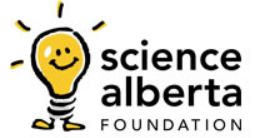 MindFuel (formerly Science Alberta Foundation) – Educator Resource Centre
MindFuel (formerly Science Alberta Foundation) – Educator Resource Centre
MindFuel (formerly Science Alberta Foundation) has created a number of resources to support hands-on and authentic science activities related to Alberta Programs of Study. Of particular interest are the “Crates,” collections of theme-based materials which can be borrowed by teachers. Students develop an understanding of concepts like animal life cycles, magnetism, light and shadow, and aboriginal perspectives.
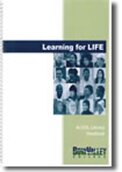 ESL Literacy Network: Essentials for LIFE
ESL Literacy Network: Essentials for LIFE
Based on the print document, Learning for LIFE: An ESL Literacy Handbook, developed by Bow Valley College in Calgary, Alberta, Canada, this site offers resources for the instruction of adult LIFE (Learners with Interrupted Formal Education). Although intended for adult literacy learners (as based on Canadian Language Benchmarks: ESL for Literacy Learners), the classroom strategies are excellent for adolescent students too. Section 2 in particular presents theories, methodology, approaches, and techniques for teaching oral fluency, vocabulary, reading and writing. ![]()
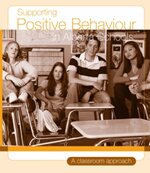 Supporting Positive Behaviour in Alberta Schools: A Classroom Approach
Supporting Positive Behaviour in Alberta Schools: A Classroom Approach
This resource provides information and strategies for systematically teaching, supporting and reinforcing positive behaviour in the classroom. Practical ideas for developing positive relations, organizing the classroom, setting behavioural expectations, providing explicit instruction in social skills and setting fair consequences are applicable when supporting refugee students who may not be familiar with classroom expectations.
Supporting Social Participation of All Students
From Strategies that Work, this guide provides strategies to support students’ ability to engage with others in the learning environment related to classroom activities, school-wide activities, interactions with others and self-management.
 Balanced Reading is a collection of resources to support balanced reading teachers. The site includes recommended resources, explanations of the concepts of fluency, phonics, phoneme awareness, reading comprehension and vocabulary. The site also provides downloadable assessment tools, including the Abecedarian.
Balanced Reading is a collection of resources to support balanced reading teachers. The site includes recommended resources, explanations of the concepts of fluency, phonics, phoneme awareness, reading comprehension and vocabulary. The site also provides downloadable assessment tools, including the Abecedarian.
Multicultural Educational Services, sponsored by the Minnesota Literacy Council and LDA Minnesota have developed a number of text and online literacy resources. Materials include:
This website created by Alberta Advanced Education and Technology provides topical easy-English articles. Some articles have audio and video texts. There are teaching resources for teachers and tutors of adult and youth literacy students.
This site has numerous easy-English reading passages of general interest to older readers. It includes learning and extension activities as well as audio files and podcasts.
 Mobile Math: Games for Elementary Students on the Go!
Mobile Math: Games for Elementary Students on the Go!
This collection of games reinforces understanding of counting, arithmetic, decimals, fractions, graphs, money (American) and time concepts.
This website provides interactive lessons and activities on a large variety of math topics from Kindergarten to Grade 8, including basic algebra, geometry, and practical math (measurement, money.)
National Library of Virtual Manipulatives
This website provides a library of uniquely interactive, web-based virtual manipulatives or concept tutorials, mostly in the form of Java applets, for mathematics instruction (K-12 emphasis).
The Futures Channel: Hands on Math
Video clips of real-life events are connected to mathematical problem solving. Some examples are baking cookies, designing art patterns with pennies, building and racing toy cars, using percents to mix colours, etc.
* Note: Some of these reference resources were accessed for the preliminary literature review in 2010.
Some links may no longer be active.
Alberta Education, (2010). ESL K-12 Language Proficiency Benchmarks. http://education.alberta.ca/media/1111060/esl_benchmark1.pdf
British Columbia Ministry of Education (2009). Students from Refugee Backgrounds: A Guide for Teachers and Schools.
Canadian Language Benchmarks 2000: ESL for Literacy Learners. (2000). Centre for Canadian Language Benchmarks.
Council of Chief State School Officers (2004). Immigrant Students and Secondary School Reform: Compendium of Best Practices. Retrieved from http://www.eric.ed.gov/PDFS/ED484705.pdf
Dooley, K. (2009).Rethinking pedagogy for middle school students with little, no or severely interrupted schooling. English Teaching Practice and Critique. 8 (1) 5-22.
Kanu, Y (2008). Educational Needs and Barriers for African Refugee Students in Manitoba. Canadian Journal of Education. 31 (4), 915-940.
Leong, M & Collins, L. (2007). Bridging the Gap: A Framework for Teaching and Transitioning Low Literacy Immigrant Youth. Bow Valley College, Alberta Employment and Industry.
Literature Review: Interventions for Refugee Children in New Zealand Schools: Models, Methods, and Best Practice. (2000). Report to the Ministry of Education, Auckland Uniservices Limited, University of Auckland.
New York State Education Department (2011). Guidelines for Educating Limited English Proficient Students with Limited Formal Education. http://www.p12.nysed.gov/biling/docs/NYSEDSIFEGuidelines.pdf
Office of English Language Learning & Migrant Education, Indiana Department of Education. Effective Programs for English Language Learners (ELL) with Interrupted Formal Education.
Ontario Department of Education (2008). Supporting English Language Learners with Limited Prior Schooling: A Practical Guide for Ontario educators.
UCLA Graduate School of Education and Information Studies (N.D.)Pathways to Immigrant Opportunity: School-based Practices Oriented towards Children & Youth. Retrieved from http://icy.gseis.ucla.edu/pathways/towards_youth
Robertson, Kristina and Susan Lafond (2008). How to Support ELL Students with Interrupted Formal Education (SIFEs), Colorin Colorado. Retrieved from http://www.colorincolo.org/article/27483
Reading the Runes: Teaching Strategies to Improve Literacy in High School Mathematics and Science. (2005). Edmonton Public Schools.
Short, Deborah and Boyson, Beverly (2012). Helping Newcomer Students Succeed in Secondary Schools and Beyond. Center for Applied Linguistics. http://www.cal.org/pdfs/newcomer/helping-newcomer-students-succeed-in-secondary-schools-and-beyond.pdf
Sutherland, E. (2008). Refugee children and families: A model for successful integration. Calgary, AB: Edna Sutherland and Associates.
Thomas, A. (2004). Meeting the needs of secondary ESL learners with disrupted schooling – Planning bridging programs. Victoria Department of Education and Training.
Walsh, C. (1999). Enabling Academic Success for secondary students with limited formal schooling: A study of the Haitian program at Hyde Park School in Boston. Providence, RI: Brown University. Retrieved from http://www.alliance.brown.edu/pubs/HaitianLit.pdf
Woods, A. (2009). Learning to be Literate: Issues of Pedagogy for Recently Arrived Refugee Youth in Australia. Critical Inquiry in Language Studies, 6 (1-2) 82-101.

